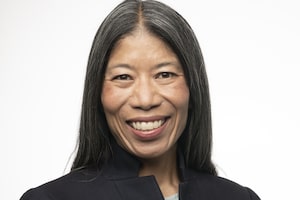News organizations may consider accusations of bias in their coverage unfair – but they shouldn’t find them surprising.
After founding what would eventually become The Globe and Mail, journalist George Brown campaigned on behalf of the Reform Party and later became its leader. As John Ibbitson wrote in his essay kicking off the series A Nation’s Paper earlier this month, “it was standard fare in those days to own a newspaper while engaging in partisan politics.”
By the end of that century, battling newspaper publishers William Randolph Hearst and Joseph Pulitzer (yes, the same guy whose name is on the prize synonymous with journalistic excellence) engaged in “yellow journalism” – the use of sensational headlines and exaggerated stories to win readers’ attention (and money). The practice even influenced global events.
In front of the world, these news media openly displayed bias – which the Canadian Encyclopedia defines as “when content spread by media reflects the interests of that company or its ownership.”
But in the intervening years, regulation and rigour came to the training and practice of journalism. Paris’s École supérieure de Journalisme, founded in 1899, is believed to be the first “j-school” on record. In North America, the Missouri School of Journalism welcomed students starting in 1908. Carleton College, now known as Carleton University in Ottawa, began offering bachelor’s degrees in journalism in 1945. Graduates were equipped with research skills, as well as an understanding of ethics.
To promote responsible journalism, the National NewsMedia Council was founded in 2015, offering resources for practicing journalists, and a place for the public to file complaints they believe were not satisfactorily addressed by the publisher. And, of course, many news organizations, including this one, employ an ombud or standards editor who works to ensure staff and freelancers adhere to their respective codes of conduct.
Yet the perception of bias continues to exist, and has been identified as a reason for distrust in the media. A 2020 study led by Simon Thibault, an associate professor in the University of Montreal’s department of political science, looked at whether Canadian news organizations were seen to have a political orientation.
Responses from more than 200 media experts (mostly academics, chosen because they were familiar with the industry but not directly involved in producing news) indicated that most news organizations are seen as leaning ideologically right on economic issues, with the Toronto Sun and Quebec talk radio stations viewed as “the most right-leaning.” Conversely, The Tyee, based in B.C., and Newfoundland and Labrador’s Telegram were viewed as most left-leaning on economic issues.
On social issues, the experts saw most news media as right-leaning, “but closer to the centre, with several outlets on the left.” The Tyee and The Telegram once again viewed as progressive, along with the Toronto Star and the French-language Le Devoir. Further, the survey indicated that “On average, two-thirds of experts associated media outlets with one of the federal parties, and half of the media outlets assessed in the survey were perceived as having a federal partisan leaning by at least three-quarters of experts in the sample.”
The emergence of partisan media can only have strengthened such views. While broadcasters Fox News, CNN and MSNBC are the most widely known for curating their coverage through a right- or left-leaning lens, smaller and local newsrooms that speak intentionally to readers with an interest in social justice or in libertarianism, for instance, are part of the phenomenon.
In a Columbia Journalism Review article, Jem Bartholomew noted “more mainstream news outlets now also proudly mix political activism with journalism.” The practice is not necessarily unethical, provided the organization’s mandate is conveyed clearly in every touchpoint it has with readers, and journalistic standards are otherwise observed.
However, while some may see partisan newsrooms as a way to give ideological communities of readers what they want, there is a concern that “echo-chamber” journalism results in a less informed public. A Yale University study recruited regular Fox News viewers, who identified as Republican, liked Donald Trump and said they disliked CNN, and paid them $15 an hour to watch CNN, plus a further $10 per quiz on what they’d viewed. A second group of study participants continued to watch Fox as they normally would.
“The people who switched to CNN became more negative in their appraisals of Trump, including his management of the pandemic, his intelligence and his honesty, according to the study,” noted Mike Cummings in a YaleNews article. “Switching to CNN also made people more aware of bias in Fox News’ coverage. For example, the switchers were less likely to agree that ‘If Donald Trump did something bad, Fox News would discuss it’.”
While the CNN viewers did not shift their opinions of Joe Biden, the study concluded that “partisan media outlets, by filtering out unflattering or negative information about their preferred ideological side, weaken the electorate’s ability to evaluate the performance of elected leaders,” Mr. Cummings reported.
Outside these partisan news sources, the way most of us find and consume news creates an echo-chamber effect as well. Algorithms employed by search engines, social media and digital news platforms are designed to suggest content that’s similar to what we have been clicking on and reading.
The takeaway, then, is the same as it’s always been: Be skeptical. Brush up on media literacy so you can determine which outlets are credible and accountable – seek your news there. And don’t put too much trust in the algorithm.
 Sandra E. Martin
Sandra E. Martin